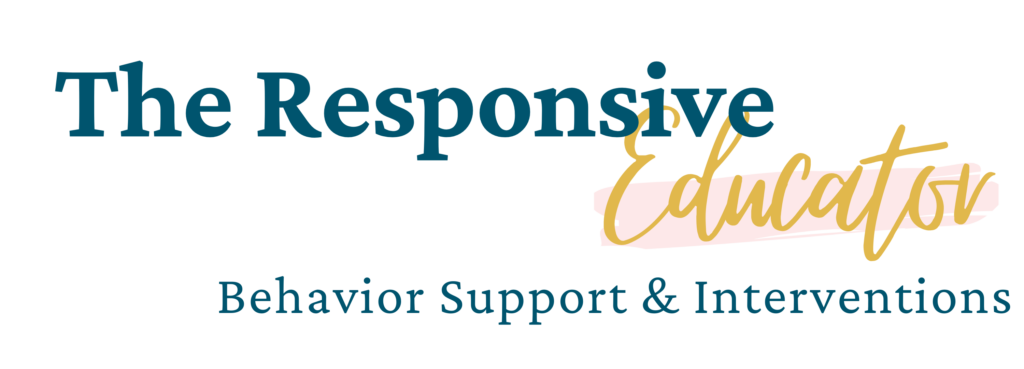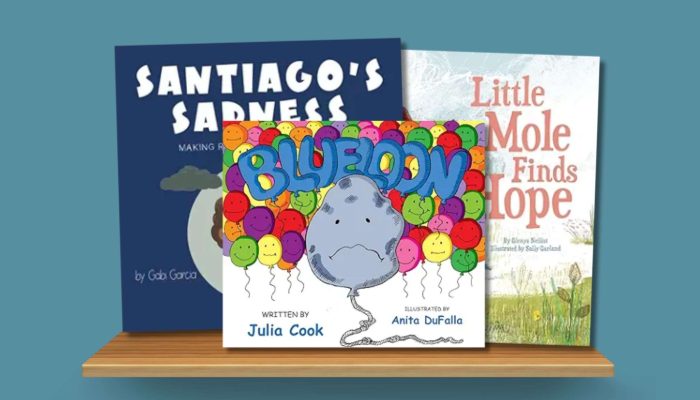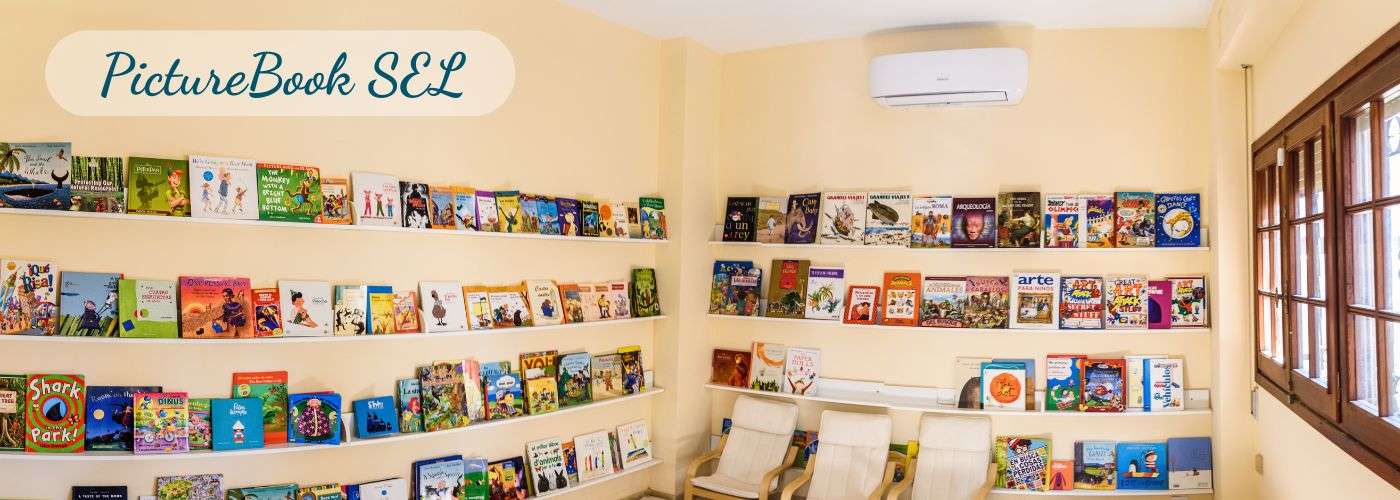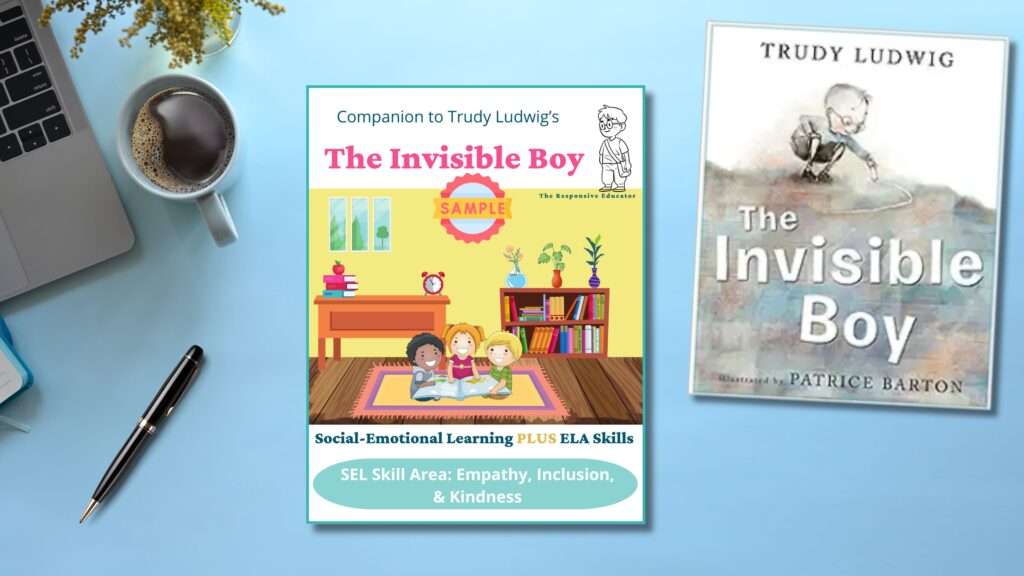


Sadness is a natural part of life, and it’s important for children to learn how to recognize and manage these feelings in healthy ways. Books can be a powerful tool for helping children understand their emotions, providing them with relatable characters, reassuring messages, and practical coping strategies. Whether a child is dealing with a specific life challenge, such as the loss of a loved one or adjusting to a major change, or simply feeling sad without a clear reason, stories about sadness and depression can offer comfort, validation, and hope.
In this blog post, I’ve curated a list of thoughtful books that address themes of sadness and depression in ways that are age-appropriate and empowering. These books open the door to important conversations, help children develop emotional awareness, and equip them with strategies to process their feelings. They’re perfect for classroom read-alouds, bedtime reading, or one-on-one moments when a child needs a little extra support.
For some of these books, I have created interactive read-alouds to enrich their use in the classroom. These interactive read-alouds include discussion questions, activities, and prompts that engage students and deepen their understanding of the book’s themes. More interactive read-alouds are on the way. If there are specific books for which you would like to see a read-aloud created, please contact me using the form at the bottom of the page.
To learn more about supporting social-emotional learning and using interactive read-alouds in the classroom, check out these posts:
(As an Amazon affiliate, I earn a small commission if you purchase products through the links on my posts. Thank you for your support!)
Summary: After the Fall by Dan Santat reimagines the classic nursery rhyme by answering the question: What happened to Humpty Dumpty after his famous fall? This beautifully illustrated story follows Humpty as he struggles with newfound fears, particularly his fear of heights, which prevents him from enjoying the things he once loved, like bird watching. With courage and determination, Humpty confronts his fears, reminding readers that life truly begins when you get back up after a fall.
Description: This uplifting picture book offers a powerful message about resilience, courage, and overcoming fear. Dan Santat takes a familiar character and gives him a deeply human experience, resonating with readers of all ages. The story uses gentle humor and poignant moments to explore how fear can hold us back and how perseverance helps us reclaim joy. The rich illustrations complement the text beautifully, using color and detail to reflect Humpty’s emotions and journey.
After the Fall is a versatile tool for teaching themes like growth mindset, emotional resilience, and self-discovery. It’s particularly fitting for conversations about overcoming anxiety or tackling personal challenges, making it a great choice for classrooms and homes alike.
Reviews and Considerations: Teachers, parents, and caregivers consistently praise After the Fall for its ability to address serious topics like fear and resilience in a way that is both accessible and inspiring for children. Many educators use it as a read-aloud to spark discussions about courage and persistence. The story’s relatable themes make it a helpful tool for introducing or reinforcing concepts like perseverance and self-confidence.
However, some reviewers note that the ending, while uplifting, may be open to interpretation, which could lead to interesting conversations with children about personal growth and transformation. The illustrations and nuanced narrative may be better suited for older elementary students who can grasp its deeper themes, but younger students will still enjoy the visuals and overall story.
Overall, After the Fall is an exceptional book for teaching students that it’s okay to fall—as long as you’re willing to get back up and keep trying.

Summary: Everyone Feels Sad Sometimes by Dr. Daniela Owen is a thoughtful and empowering resource for children learning to navigate feelings of sadness. The book uses relatable scenarios, such as feeling left out or coping with the illness of a loved one, to show children that sadness is a natural emotion. Through simple yet effective strategies, children discover “happiness triggers” that can help them process their feelings and move toward a sunnier emotional outlook.
Description: Dr. Owen, a clinical psychologist, provides a compassionate and accessible guide for children to better understand and manage their sadness. The book emphasizes that it’s okay to feel sad and encourages children to acknowledge their emotions without judgment. From focusing on small, joyful activities to practicing kindness and self-compassion, Everyone Feels Sad Sometimes equips young readers with practical tools to process sadness in a healthy way. The vibrant illustrations and relatable examples make the content engaging and easy for children to grasp.
This book is particularly valuable for parents, teachers, and caregivers looking for a way to open conversations about difficult emotions. Its blend of empathy, practical strategies, and approachable language makes it suitable for children navigating everyday sadness or processing more significant life events.
Reviews and Considerations: Parents and educators praise Everyone Feels Sad Sometimes for its approachable and sensitive handling of a challenging topic. Many note its usefulness in normalizing sadness and providing actionable strategies for children to cope with their emotions. The book is particularly helpful for children in early elementary grades, though some reviewers suggest it may be too simplistic for older children, such as those over eight years old.
Some feedback highlights that the book’s language and concepts may be best suited for younger children, particularly those in the preschool to first-grade range. A few reviewers have mentioned that younger readers may find some sections wordy, but overall, the book’s vivid illustrations and examples help maintain engagement.
This resource is ideal for children experiencing sadness due to common life changes, such as moving, losing a loved one, or feeling excluded. Its positive message and practical tools make it a valuable addition to any home, school, or therapeutic setting focused on emotional intelligence and resilience.

Summary: The Blueloon by Julia Cook is a heartfelt and accessible story that introduces children to the concept of depression in a way they can understand. Through the character of Blueloon, a balloon feeling deflated and tangled, the book gently explores the emotional and physical challenges associated with depression. With the guidance of a wise rock, Blueloon learns actionable steps to feel brighter and more balanced, symbolizing the process of recovery. This story provides children with hope, understanding, and strategies to help them manage tough emotions, fostering resilience and self-awareness.
Description: Julia Cook, known for addressing difficult topics in a child-friendly way, tackles the sensitive subject of depression with empathy and creativity. The Blueloon uses the metaphor of a balloon to describe the emotional weight and complexity of feeling “blue.” The book acknowledges that children, like adults, can experience depression but might not have the words to express it. Blueloon’s journey emphasizes the importance of seeking support, practicing self-care, and maintaining hope during difficult times.
The narrative also briefly touches on the potential role of medication, offering a well-rounded perspective that normalizes different approaches to managing mental health. The vibrant illustrations bring Blueloon’s struggles and progress to life, making abstract feelings more relatable for young readers. This book is a helpful tool for parents, teachers, and counselors aiming to support children who may be dealing with sadness, depression, or anxiety.
Reviews and Considerations: Parents, teachers, and therapists have praised The Blueloon for addressing childhood depression in a way that is accessible and empathetic. Many appreciate the actionable advice and the normalization of seeking help, whether through supportive adults, self-care strategies, or even medical intervention when necessary. Teachers and counselors have noted that the book can spark meaningful discussions about mental health in a classroom or small group setting.
However, some reviewers have raised concerns about certain parts of the narrative. A few feel that the emphasis on Blueloon being “dull” and “flat” may unintentionally reinforce negative stereotypes about people with depression. Additionally, some critics find the advice offered overly simplistic, particularly for children experiencing more severe depression. While the book has been helpful for many, it may require additional discussion or adaptation to ensure its messages are empowering and not inadvertently harmful.
Overall, The Blueloon is a valuable resource for initiating conversations about mental health and teaching children that they are not alone in their feelings. It is best used alongside open dialogue and support from trusted adults, making it a useful addition to both home and school libraries.
Help students manage their impulses with the It’s Hard to Be a Verb! Interactive Read Aloud Lesson Plan Book Companion, ELA, SEL Activities. This 96-page resource features over 40 activities, providing 15-20 hours of engaging lessons that seamlessly integrate social-emotional learning (SEL) and English Language Arts (ELA) skills.
Perfect for whole group, small group, and independent work, this comprehensive resource ensures that students develop essential skills in an interactive and supportive way. The lesson plan includes a variety of discussion questions, activities, and prompts designed to help students understand and manage hyperactivity and inattention, promoting self-regulation and coping strategies.

Summary: Marvelous Cornelius is an uplifting tale inspired by a real-life garbage collector in New Orleans. The story highlights Cornelius’s infectious joy and pride in his work as he dances and sings while cleaning the city streets. However, the narrative takes a poignant turn as Hurricane Katrina devastates the city. Cornelius’s unyielding spirit and the unity of the community shine through as they rebuild together. This beautifully illustrated book celebrates resilience, community, and the extraordinary impact of ordinary individuals.
Description: Phil Bildner’s Marvelous Cornelius pays tribute to the unsung heroes of our communities, particularly a garbage collector whose larger-than-life personality and dedication to his city left a lasting impact. Set against the vibrant backdrop of New Orleans, the story blends folk tale elements with historical reality, offering young readers an introduction to themes of service, community pride, and perseverance.
The lyrical text, enriched by John Parra’s bold, mural-like illustrations, captures the energy and culture of New Orleans. The book also subtly introduces children to the aftermath of Hurricane Katrina, emphasizing the power of hope and collective effort in overcoming tragedy. With its emphasis on the dignity of work and community solidarity, Marvelous Cornelius is a timeless story that resonates across generations.
Reviews and Considerations: Marvelous Cornelius has been widely praised for its heartwarming message and its ability to spark meaningful discussions with children. Educators and parents appreciate the book’s celebration of community helpers and its sensitive yet hopeful portrayal of Hurricane Katrina’s impact. The illustrations are particularly lauded for their folk-art style, which captures the vibrant spirit of New Orleans and the strength of its people.
Teachers have noted that this book is an excellent tool for exploring topics such as community service, resilience, and the importance of every individual’s contributions, regardless of their profession. The inclusion of a quote from Martin Luther King Jr. about the dignity of work adds depth and relevance for older elementary students.
Some readers, however, caution that younger children might need additional context to fully understand the references to Hurricane Katrina and the idea of rebuilding after such devastation. While the story incorporates elements of folklore, it is not a strict biography, which may require clarification for readers seeking historical accuracy.

Summary: In Santiago’s Sadness, young Santiago struggles with sadness after his family moves to a new place. He no longer feels like smiling, playing, or engaging with the world around him. Through the kindness of a new friend, Santiago learns the importance of acknowledging and accepting all his feelings, including sadness. As he navigates his emotions, he discovers that giving himself space to feel is a key step toward healing. The book emphasizes the message that while dark clouds may appear, they are often followed by sunshine.
Description: Gabi Garcia’s Santiago’s Sadness is a touching exploration of childhood emotions, specifically focusing on sadness and how children can process it in healthy ways. The story provides a gentle narrative for helping kids understand that emotions like sadness are normal and deserve compassion, not avoidance. Santiago’s journey encourages self-kindness and demonstrates how friendship and emotional awareness can help children cope with challenging feelings.
The book includes practical coping tools and activities at the end, giving parents, teachers, and caregivers resources to reinforce the story’s message. With its relatable story and actionable advice, Santiago’s Sadness makes a valuable addition to any social-emotional learning library, whether at home or school.
Reviews and Considerations: Santiago’s Sadness has been widely praised for its relatable story and practical emotional strategies. Many parents and educators appreciate how the book teaches children to identify and express sadness in healthy ways. It’s particularly useful for children navigating big life changes, such as moving to a new place, or processing complex emotions after a difficult event.
The book’s sensitive tone and comforting message resonate with readers of all ages, making it an excellent tool for opening discussions about emotions. Parents have noted that it provides reassurance and actionable steps, such as writing and drawing, to help children express themselves.
While Santiago’s Sadness is a powerful resource, some readers might find it more suitable for children who already have a basic understanding of emotions. Younger children may benefit from additional guidance when exploring the themes in the book. Overall, it is an excellent choice for fostering emotional intelligence and promoting a healthy understanding of feelings.

Summary: Little Mole Finds Hope tells the story of Little Mole, who feels sad in his dark underground home but doesn’t understand why. His wise mother takes him on a journey to discover signs of hope all around, from daffodil bulbs hiding beneath the soil to budding branches on trees. Through his mother’s gentle guidance, Little Mole learns that even in the darkest places, hope is present if you know where to look.
This heartwarming tale is a celebration of resilience and renewal, offering comfort and encouragement to children navigating sadness or challenging times.
Description: Written by Glenys Nellist and beautifully illustrated by Sally Garland, Little Mole Finds Hope is a story about finding light in life’s darker moments. The book introduces the concept of hope in a tangible and relatable way, helping children recognize that sadness is a natural emotion and that brighter days lie ahead.
The illustrations skillfully reflect Little Mole’s emotional journey, starting with muted tones that gradually brighten as he discovers hope. The narrative also features moments of gentle repetition, reinforcing the uplifting message that life holds promise, even in the quiet, unseen moments of growth.
The book concludes with a thoughtful discussion guide for caregivers, offering conversation prompts and tips for helping children process their emotions. This makes it an excellent resource for parents, teachers, and counselors looking to support children through sadness or transitions.
Reviews and Considerations: Little Mole Finds Hope has received glowing reviews for its ability to address complex emotions in an age-appropriate and comforting manner. Parents and teachers praise the story for fostering meaningful discussions about sadness, hope, and resilience. he book is particularly suitable for younger elementary-aged children, although its universal message resonates with readers of all ages. The discussion guide at the end is a standout feature, providing actionable advice for caregivers to help children recognize and express their feelings.
Some reviewers highlight the story’s dual appeal: it can be read simply as a nature-themed tale or explored more deeply for its emotional message. While one reviewer found the pacing repetitive, most consider it a strength that adds to the book’s calming tone and suitability for young readers.

Summary: The Rabbit Listened is a touching story about Taylor, who faces disappointment after something sad happens. Various animals attempt to comfort Taylor with their own ideas: the chicken wants to talk it out, the bear suggests getting angry, and others propose solutions like laughing, crying, or fixing the problem. But none of these approaches feels right for Taylor. It isn’t until the rabbit quietly sits and listens that Taylor begins to heal.
This beautifully illustrated book emphasizes the importance of compassionate listening, reminding readers that sometimes the best way to support someone is simply to be present and attentive.
Description: With spare, poignant text and gentle illustrations, The Rabbit Listened offers a powerful lesson about emotional support and empathy. The book introduces young readers to different ways people might respond to sadness or frustration, showing that well-meaning advice or attempts to fix a situation are not always what’s needed. Instead, the rabbit’s quiet, unconditional presence is what helps Taylor feel understood and ready to move forward.
This story resonates with readers of all ages, teaching children about emotions and offering adults a reminder of the value of active listening. The universal message makes it suitable for addressing various situations, from grief to disappointment, making it a versatile addition to social-emotional learning in classrooms and homes.
Reviews and Considerations: The Rabbit Listened has been praised by parents, teachers, therapists, and caregivers for its gentle approach to emotional healing. Reviewers appreciate its simple yet profound narrative, which demonstrates the power of being present without judgment or unsolicited advice.
The book is often recommended for children navigating grief, disappointment, or other big emotions. Its calming tone and approachable characters make it suitable for preschoolers and early elementary students, while its universal message resonates with older children and even adults. Many reviewers have noted its usefulness as a tool for encouraging meaningful conversations about emotions and empathy.
Some readers, especially therapists, highlight the book’s effectiveness in teaching validation skills and emotional regulation. Others recommend it as a gift for children and adults alike, emphasizing its timeless message.



Sign up now to receive a free sample of “The Invisible Boy” Interactive Read-Aloud Lesson Plan! This comprehensive resource includes engaging activities designed to help your students develop empathy and inclusion.
By signing up, you will also join our newsletter, where you’ll receive:
Join our community of educators dedicated to fostering social-emotional growth in the classroom!

*In Progress. Links will become active as pages are available.
Anger
Anxiety / Worry
Apologizing
Autism
Bad Day
Be Yourself
Body Safety & Personal Boundaries
Bravery & Trying New Things
Choices & Consequences
Cleaning Up/ Doing Chores
Conflict Resolution
Compromise / Cooperating
Coping with Change
Creativity & Imagination
Deployment
Differences & Diversity
Dreams & Aspirations
Dyslexia
Empathy & Compassion
Feelings & Behavior
Follow Rules & Directions
Foster Care & Adoption
Friendship Skills
Gratitude
Grief & Loss
Growth Mindset
Healthy Habits
Helping Others
Honesty & Integrity
Including Others
Kindness & Generosity
Managing Physical Actions
Manners & Social Expectations
Mindfulness
Mistakes
Organization & Planning
Patience
Peer Influence
Perseverance
Personal Space & Boundaries
Perspective & Point of View
Physical/Medical Disabilities
Positive Attitude
Resilience
Responsibility
Sadness & Finding Hope
School Success
Sensory Processing
Separation Anxiety
Sharing
Speaking Politely
Tattling vs. Telling
Teasing & Bullying
Technology
Trauma Recovery
Understanding Feelings
Winning & Losing